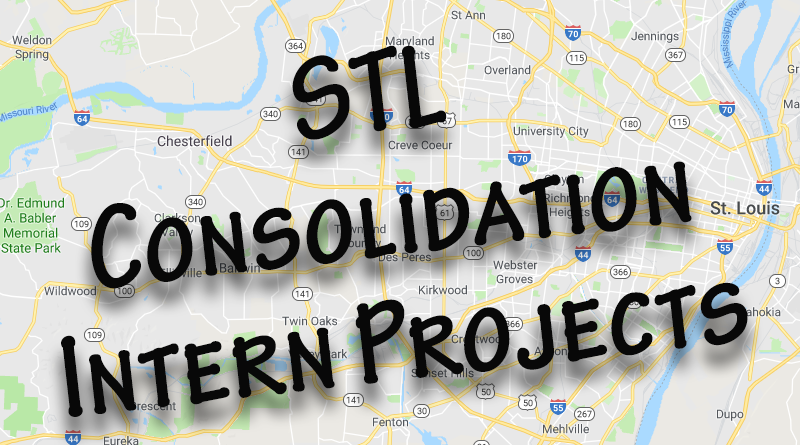This was written by one of our summer interns. The opinions expressed herein do not reflect those of Civitas other than respect for the value of open dialogue.
To read more intern articles and interviews on STL Consolidation, please click here.
With an apology for responding so late (there was no response deadline) and a cheery “Good luck!” at the end, Mrs. Dubis answered my questions on a potential city county merger. Her answers seemed to indicate a teacher who was busy with the start of the school year; they were to the point and no was a complete sentence. School was about to be back in session and her no-nonsense tone indicated that school was back in session.
Mrs. Dubis taught science at Kirkwood High School for 31 years and still works there as a science lab tech. While she is not personally involved in the city county merger (her response was a singular “No”) anyone involved in education has an opinion on the merger because of the direct impact it would have on their jobs. When asked about whether or not she supported a merger, she responded simply, “No, I don’t think it would work.”
However, her response about a school district merger took a more positive tone. She stated that “it would be great to merge the school districts since those in the city are in such poor shape.” But, Mrs. Dubis is a science teacher, which means she believes firmly in the scientific method. So, while she thinks that the idea of an education merger is a good idea, she also believes that good ideas do not always work. While it “would be great to merge the school districts” she’s “just not sure that this is a feasible option.”
Why wouldn’t it be feasible? Well, to quote Mrs. Dubis, “I don’t know how it could be equitable to all involved.” Merging school districts is complicated, especially because St. Louis funds public education through property taxes. This increases the disparity between school districts and further widens the gap between public schools in the city and public schools in the county.
This idea of equity continued to be a theme when Mrs. Dubis was asked about whether a merger would help alleviate some of the racial disparity found in St. Louis’s education system. While she “wish[es] that it [a merger] would help with racial disparity…it would be too difficult to pull off smoothly and fairly.” But, as ever the science teacher, she proposes an alternative hypothesis: perhaps the city and county could share professional development opportunities. She also proposes “Temporary teacher and student exchanges…” where “students…spend part of a school year at a different school and the same with teachers.” While challenging, the exchange program would “allow for better understanding of the disparity and hopefully begin conversations that may lead to real improvement.” These conversations would be the first step to creating an equity plan that would benefit both city and county students.
Mrs. Dubis does not believe that a merger could be successfully accomplished in a way that would be feasible. Consolidation is a beast that is unwieldy and chaotic and cannot be properly implemented, especially with the disparity found in the school districts. However, the conversation should not stop at consolidation, there are other ways to merge, combine, or cooperate between school districts in the city and the county. Mrs. Dubis believes that these other options might be the more manageable and authentic ways to build bridges between city public schools and county public schools.
1. Taught science at Kirkwood High School for 31 years. Working part time there currently as science lab tech.
2. No.
3. No, I don’t think it would work.
4. It would be great to merger the school districts since those in the city are in such poor shape. However, I’m just not sure that this is a feasible option. I don’t know how it could be equitable to all involved.
5. I wish it would help with racial disparity, but I think a merger would be too difficult to pull off smoothly and fairly. Maybe a better option would be to work together on professional development together. Temporary teacher and student exchanges may be helpful. For example, allow students to spend part of a school year at a different school and the same with teachers. This would also be challenging, but may allow for better understanding of the disparity and hopefully begin conversations that may lead to real improvement.


Pingback:STL Consolidation Student Intern Projects - CIVITAS-STL